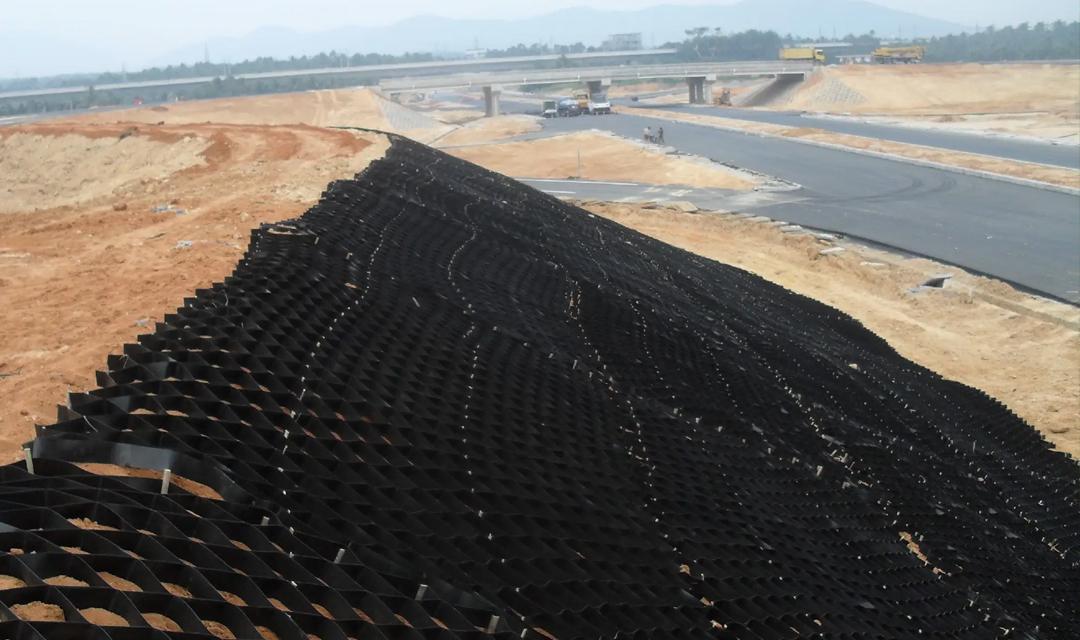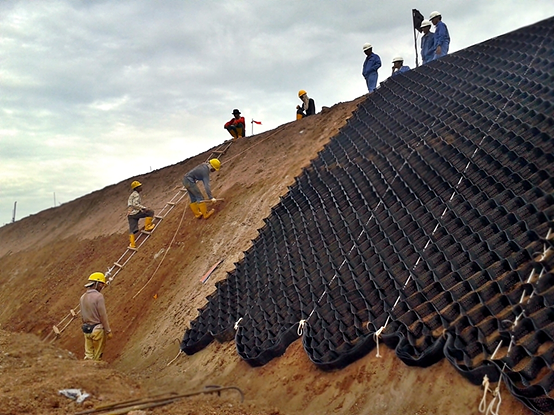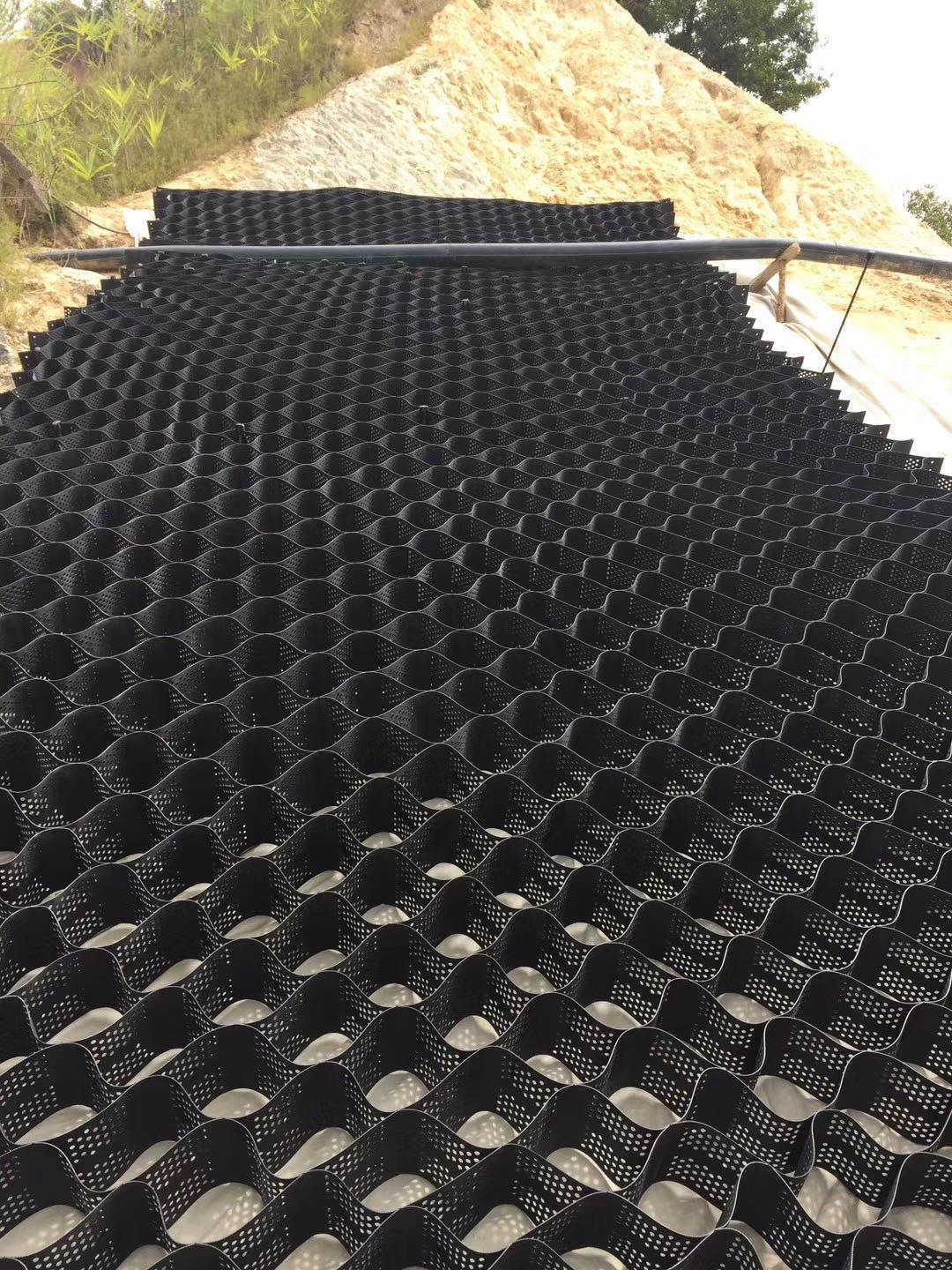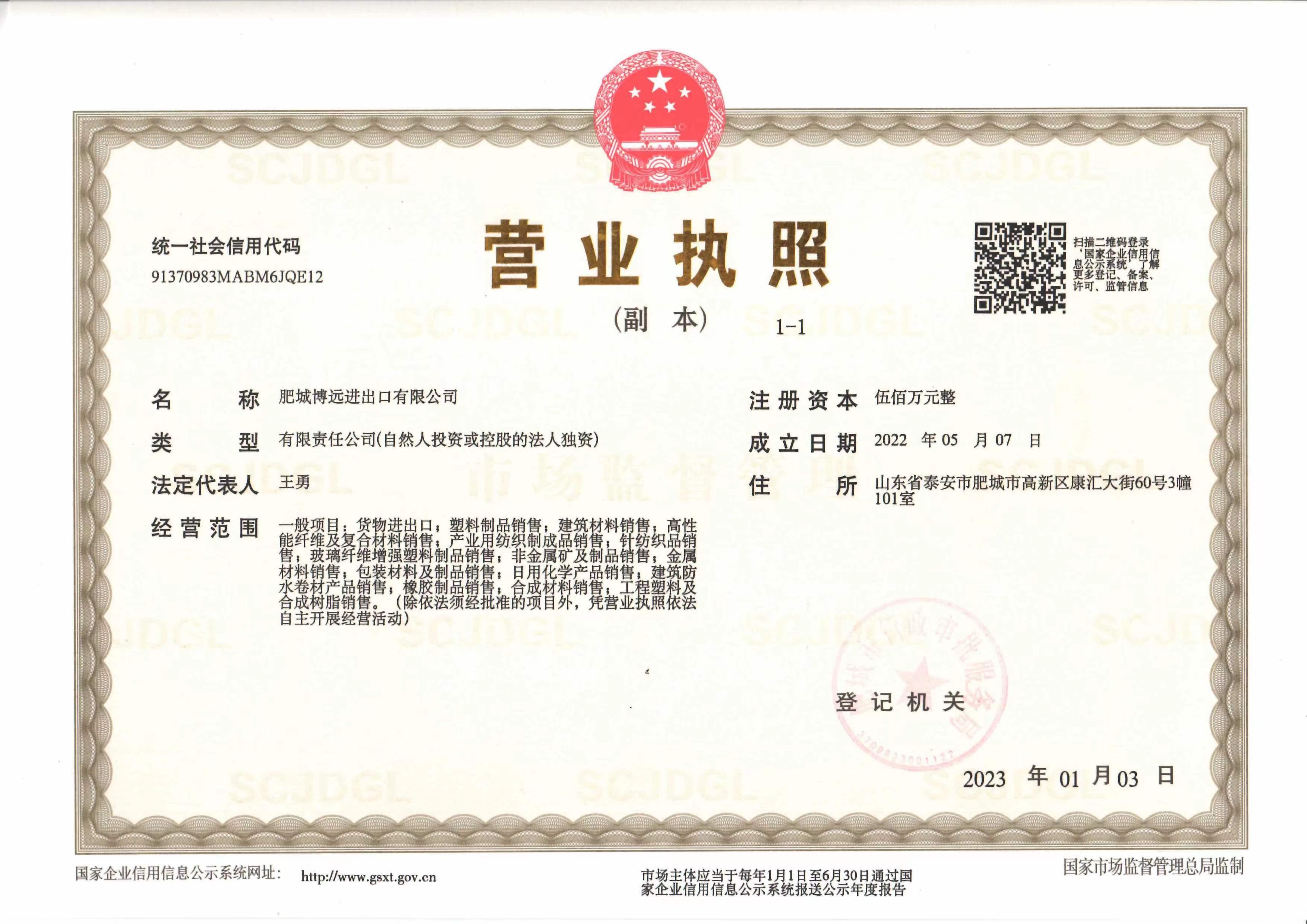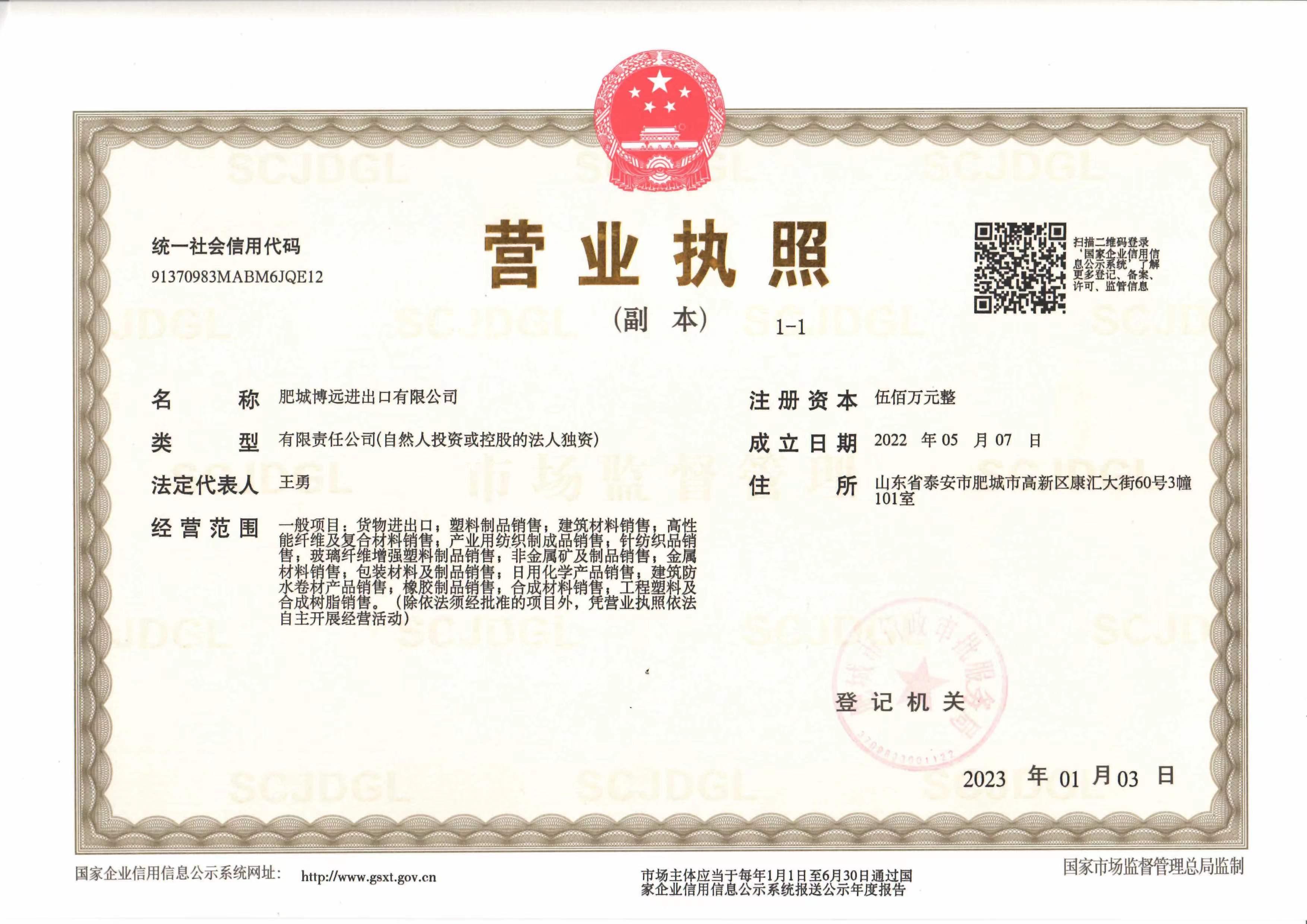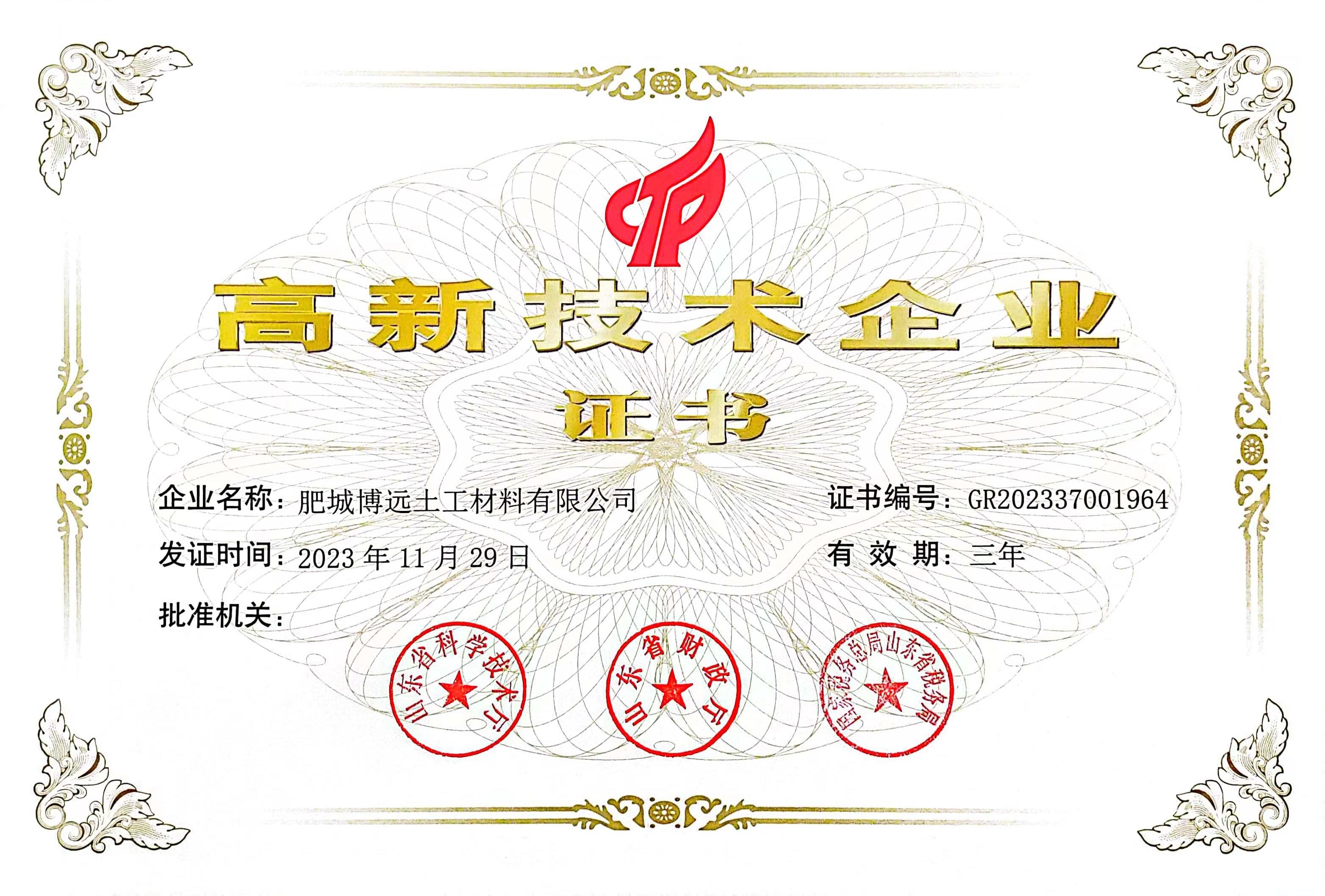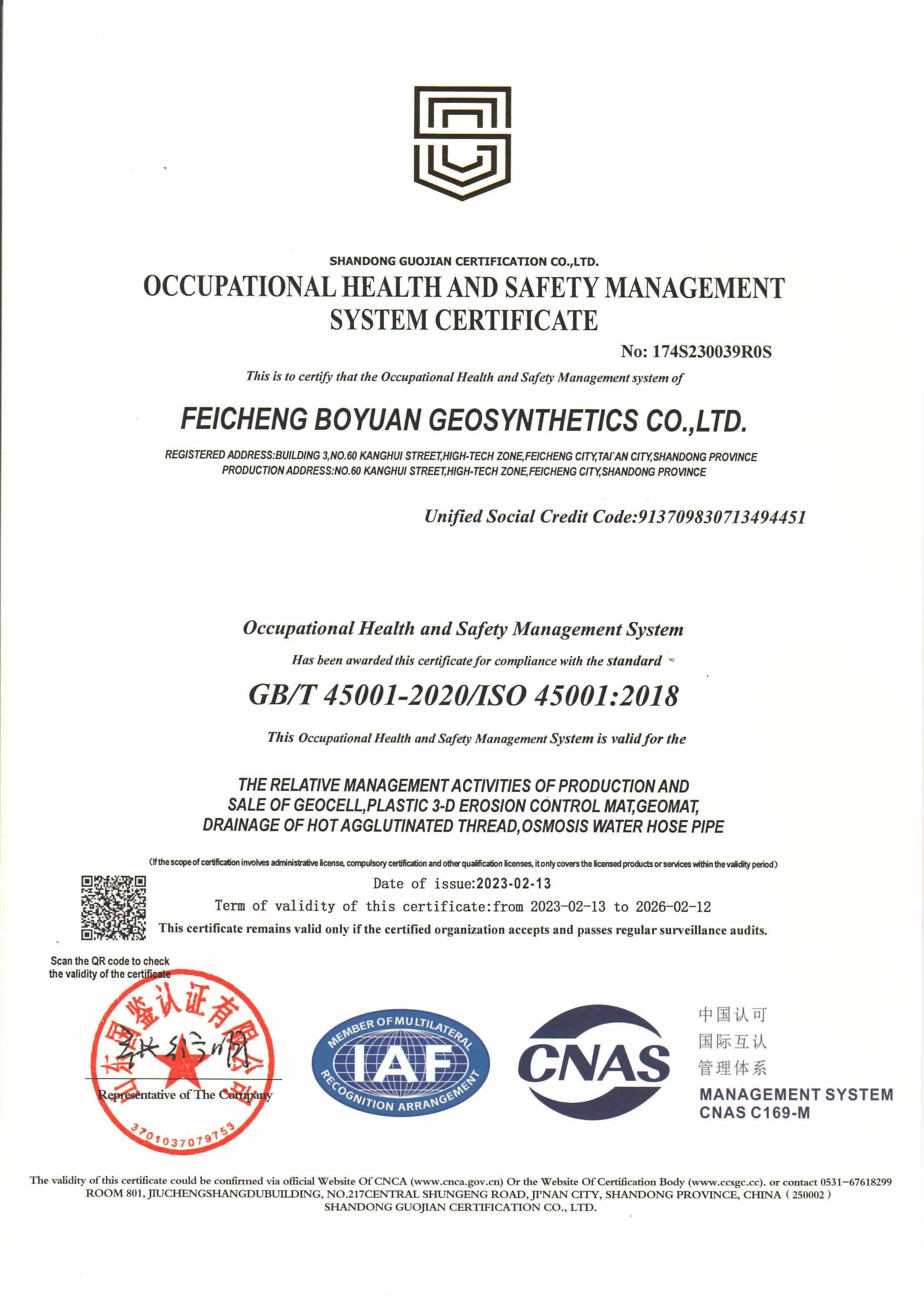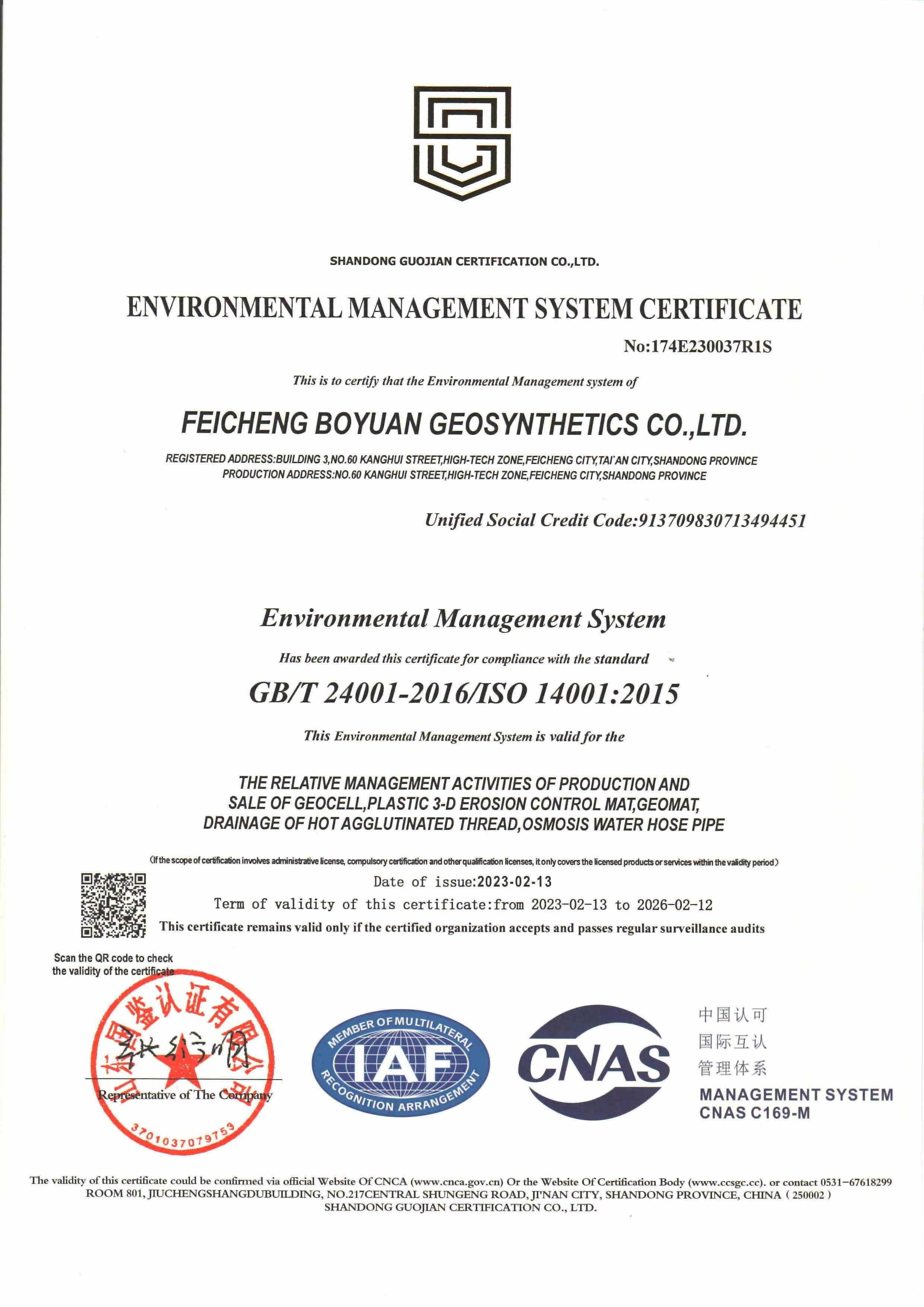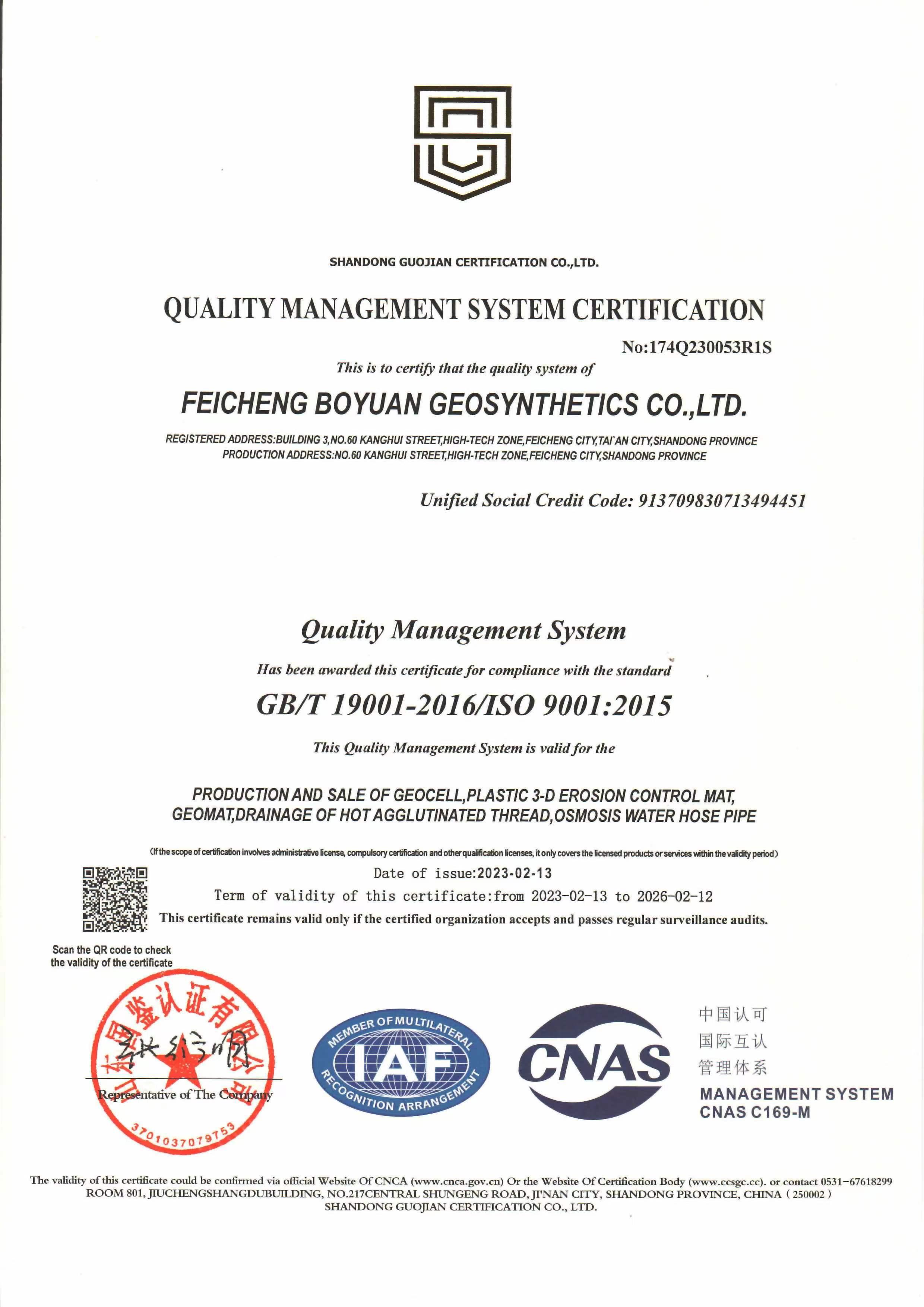Geosynthetics are rich in variety and are widely used in practical engineering applications, and are usually considered to perform isolation, back filtration, drainage, impermeability, reinforcement and protection functions and roles. With the development of technology and products and the depth of research, people realize that geosynthetic materials engineering applications can also play a pollution barrier, protection and reinforcement role.
(1) isolation
Isolation refers to geosynthetic material can isolate two kinds of filler with different particle size distribution, so as not to mix with each other and lose the integrity of various materials and structural integrity. For example, the geotextile is laid in the road base coarse grain material and the lower fine grain soil between, avoid coarse aggregate thorn in the lower foundation soil, in order to ensure the thickness and integrity of the grass-roots level; at the same time, help to prevent the lower fine grain soil turning slurry into the upper coarse grain grass-roots level.
(2) Reverse filtration
Anti-filtration (filtration) refers to the geosynthetic material allows the liquid inside the soil body (usually water) to pass through and discharge, while preventing the loss of soil particles upstream, its role is similar to that of the traditional sand filter layer. For example, geotextiles are commonly used to wrap gravel blind trenches, tubewells or geotubes to stop fines from entering the gravel layer, tubewell or geotube while keeping drainage open.
(3) Drainage
Drainage refers to the role of geosynthetic material itself as a drainage body to collect and drain fluid from low permeability fill or soil layers. For example, geotextiles laid at the bottom of embankments can be used to dissipate pore water pressure; vertical plastic drainage tapes (PVD) are used to accelerate the drainage consolidation process of soft clay foundations under pre-pressure loading.
(4) Anti-seepage
Anti-seepage refers to the use of low permeability or impermeable water / gas geosynthetic materials as a barrier to liquid / gas, to prevent its infiltration. For example, geomembranes and GCL are used as barriers to infiltration in dams and channels, etc., and in landfill liners as barriers to prevent the spread of leachate pollution. It is customary in China to refer to the barrier blocking effect of such barriers as impermeability.
(5) Reinforcement
Reinforcement refers to geosynthetic materials in the soil as reinforcing members, or geosynthetic materials and soil combined to form a composite body to improve the strength and deformation properties of the fill or reinforced body. For example, in the field of traffic engineering, the use of geogrids or spun geotextiles as reinforcement materials to build upright retaining walls or steep slopes can improve the stability of the filling body, and save the filling and reduce the land area.
(6) Erosion control
Erosion control refers to the role of reducing soil loss caused by rainfall impact, surface runoff and water erosion by setting up geosynthetic material protection measures, this role is also known as erosion control. For example, the use of geotextile sediment fences on slopes can intercept suspended particles in turbid runoff; the use of geotechnical mats to cover beneficial soil bare slopes can significantly reduce soil erosion and facilitate the growth of vegetation.
(7) Pollution barrier
Pollution barrier (barrier for environmental containment) refers to the use of natural soil, geosynthetic materials, etc. to form a physical-chemical barrier to isolate pollutants or corrosive fluids in the site, control the amount of pollutant seepage, delay the process of diffusion of pollutants, in order to prevent and control the secondary pollution of the environment around the site. For example, in municipal solid waste landfills, as the waste degrades to produce a large amount of leachate containing organic and inorganic pollutants, the bottom lining of the landfill consisting of compacted clay, geomembrane, GCL, etc. should not only have an impermeable effect, but also play a role in blocking the diffusion of pollutants.
(8) Protection
Protection here refers specifically to the use of a geosynthetic material to prevent another geosynthetic material from being damaged or destroyed. For example, non-woven geotextile fabrics are used in geomembrane impermeable structures to avoid geomembranes being punctured by sharp objects and to prevent geomembranes from losing their proper function due to damage.
(9) Reinforcement
Reinforcement is different from reinforcement, reinforcement refers to the role of geosynthetic materials to limit the role of filling soil particles to change position. For example, in the small spacing reinforced soil compound body, the force occurs strain of the tendon material through the tension restrains both sides of the displacement of the filler; In the use of geotechnical compartment to fill the granule material for foundation treatment, geotechnical compartment limits the displacement of the bulk material. From the geosynthetic material type and function of the discussion can be seen, a class of products depending on the process or material can be subdivided into different subclasses, with one or more functions; different types of products can also play the same or similar functions.


